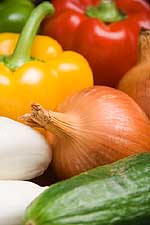| Home A B C D E F G H I J K L M N O P Q R S T U V W X Y Z |
|
Home |
Glycemic Index Diet
Every time you pick up a magazine or read a newspaper you're bound to see a bunch of ads or even articles praising a new diet or a "miracle way" to lose weight. The Glycemic Index is not one of these. It's not a fly by night diet scam that promises results and leaves you with nothing but false hope. The Glycemic Index is about measuring the quality, not quantity of carbohydrates and ranking them according to how quickly they raise your blood sugar levels. Blood sugar (glucose) level is the amount of glucose (sugar) in the blood. For the sake of our health, blood-glucose levels need to remain within certain levels. The body regulates these blood sugar levels using two mechanisms: hunger and insulin. The website http://www.carbs-information.com explains:
Carbohydrates, which include foods such as fruit, vegetables, starches, grains and cereals etc, have an effect on the body's blood glucose levels. When carbohydrates are digested, they release glucose into the system, providing energy. When you eat carbohydrates that rank high up on the Glycemic Index, they release too much energy into the system too quickly, commonly called an "energy spike". This spike is also followed by a rapid energy low. If this energy cannot be used, it gets stored as body fat. The Glycemic Index ranks carbohydrates on how quickly they break down during digestion. Foods that break down the quickest, resulting in a faster digestion and rapid energy spike have a high GI value. High GI foods rank in at above 70 points on the Glycemic Index. Foods that take longer to digest, resulting in a slower release of energy into the system has a lower GI value. Low GI foods rank in at under 55 while intermediate GI foods rank in at between 56 – 69. For optimal results from your nutrition, you should aim to eat low to intermediate GI foods and avoid the high GI foods wherever possible. You will find that low and Intermediate GI foods tend to provide you more sustained energy levels, keeping you full and satisfied for longer periods. Foods with a Low GI value
Foods with a high GI value
|
||
|
|
||
|
Glossary References Links Contact
|